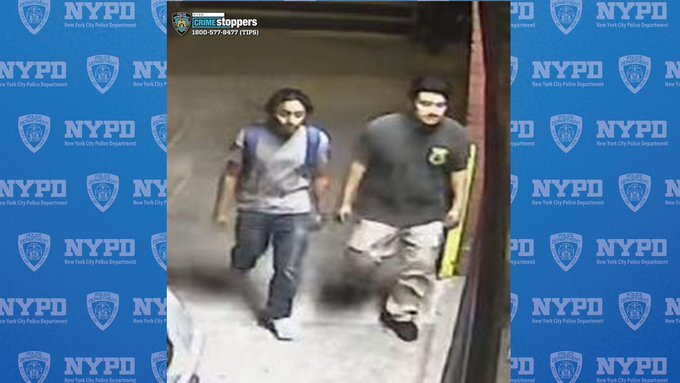By Juan Soto
The decision by the Metropolitan Transit Authority to shut down the subway system for the first time in its 110-year history because of a snowstorm is being questioned as elected officials defended the move.
Gov. Andrew Cuomo’s order to close public transportation in New York came as a surprise to New Yorkers, and a subway advocacy group questioned if state authorities studied any alternatives to the drastic measure.
Mayor Bill de Blasio did not second guess the decision, but he was not pleased with the short notice given by Cuomo’s office about the shutdown.
“I think it was a very big move and certainly something we would have liked to have had some more dialogue on,” de Blasio said.
The mayor’s office said de Blasio found out about the important decision about 30 minutes before Cuomo announced it at an early Tuesday evening news conference.
At the end, what had been billed as a historic blizzard for New York City turned out to be a regular winter storm.
In the meantime, the NYPIRG Straphanger Campaign, the subway advocacy group, said halting subway and buses inconveniences millions and harms the city’s economy.
“Closing the entire city transit system is a very strong step,” Gene Russianoff, chief spokesman for the Straphangers Campaign, said. “But as we saw in the case of Superstorm Sandy, it can be the right thing to do.”
The MTA suspended subway service from 11 p.m. Monday until 9 a.m. Tuesday.
Russianoff pointed out that “in the wake of past extraordinary events, from storms to derailments, both the MTA and its outside monitors have conducted detailed reviews. To its credit, the MTA has treated these crises as an opportunity for improvement.”
He raised several issues, including whether the MTA has a protocol similar to the one that calls for service shutdowns if hurricane wind speeds exceed 39 mph as occurred with Sandy.
Russianoff also asked, “Were alternatives to a system shutdown analyzed, such as keeping parts of the system operating?” He added, “If so, how was that decision made for a system closure?”
Many agreed with Cuomo’s decision.
City Councilman Mark Weprin (D-Oakland Gardens) defended the action.
“It is better to err on the side of caution,” Weprin said. “At the end it was not necessary, but it was the right thing to do based on the information they had in the afternoon.”
The lawmaker said winter storm Juno did not leave behind the 2 to 3 feet of snow predicted, but in some areas of Queens, snow accumulations were up to one foot.
He pointed out that the city had not had more than a foot of snow for nearly 10 years.
According to the National Weather Service, Juno dropped 13 inches of snow in Bellerose and Queens Village, and a foot of snow in Bayside, Whitestone and Woodside.
De Blasio toured Bayside Tuesday morning. He was on Bell Boulevard speaking with store owners and employees. He also visited Howard Beach and Jamaica.
Thousands of flights in and out of JFK and LaGuardia airports were canceled or delayed. JFK recorded an accumulation of 10.7 inches, while snow at LaGuardia hit the 11.4-inch mark.
Late Monday and all-day Tuesday, New Yorkers faced travel bans and restrictions, limited or no public transportation service, and public school, parks and library closings.
Schools reopened Wednesday.
Beside the subway and bus shutdown, the LIRR also stopped running, and in the five boroughs non-emergency vehicles had to be off the roads by 11 p.m. Monday. Drivers were allowed back on by 7:30 a.m. Tuesday. Subway was back in service by about 9 a.m. operating on a Sunday schedule, which is about 60 percent of the regular service.
Service was back to normal Wednesday.
Alternate side of the street parking regulations were suspended at least until Saturday.
Sanitation Department Commissioner Kathryn García said Monday 2,400 workers from her agency cleaned the city streets Monday night into Tuesday as part of the snow removal efforts. She added the workforce was able to “get into most secondary streets for at least one pass.”
García also noted that some of these roads “definitely need a second pass, particularly out in eastern Queens, where they saw more than 10 inches of snow.”
The storm had also an effect on the city’s blood drives.
According to the New York Blood Center, about 3,000 scheduled donations were lost, the largest number since Superstorm Sandy hit in 2012.
The organization said New York and New Jersey need about 2,000 donations daily. “There are zero blood drives today [Tuesday],” said Andrea Cefarelli, executive director of Donor Recruitment. “Our donor centers are closed, which is an anomaly.”
Because of the donations lost due to Juno, she called on New Yorkers to schedule blood or platelet tests with the center.
“We were able to anticipate the blood cancellations, and our hospital partners have received the life-saving supplies they needed for the worst of the storm,” said Rob Purvis, vice president for the New York Blood center.
Reach reporter Juan Soto by e-mail at jsoto@cnglocal.com or by phone at (718) 260–4564.































